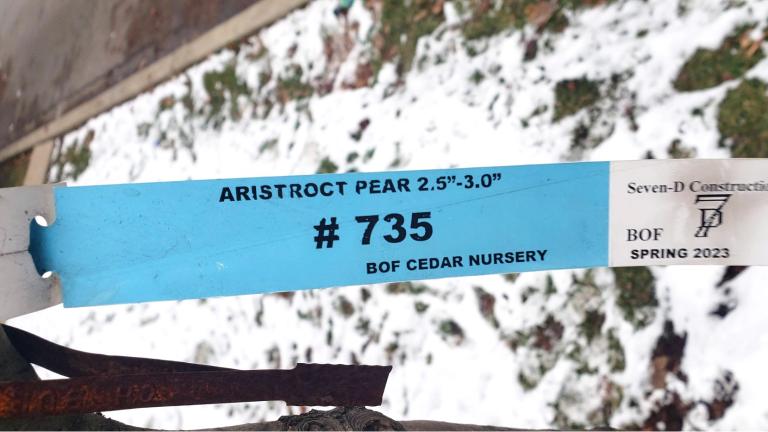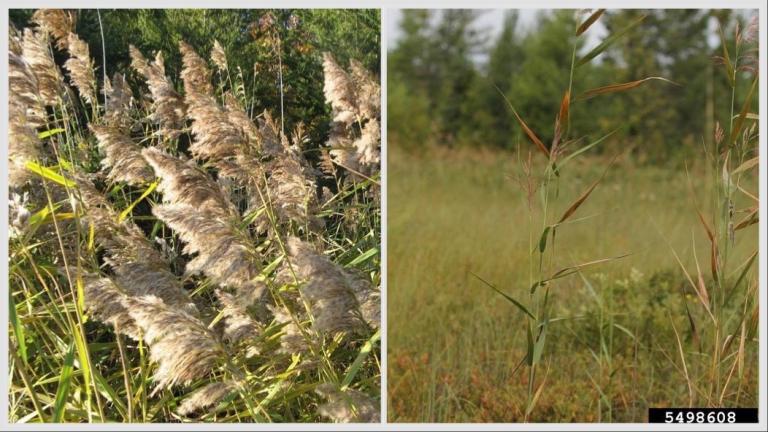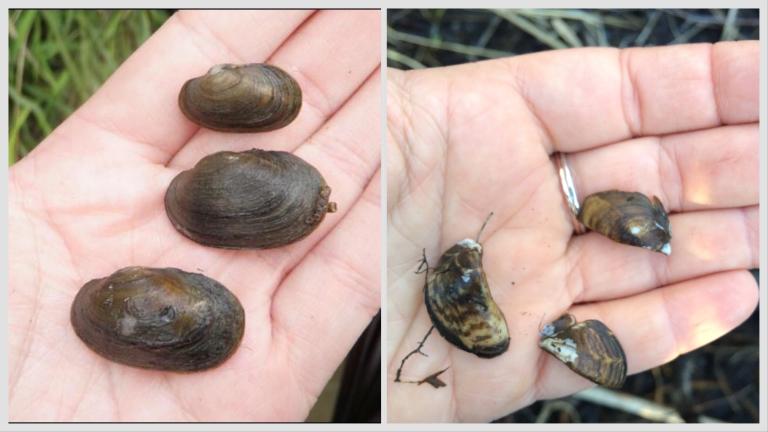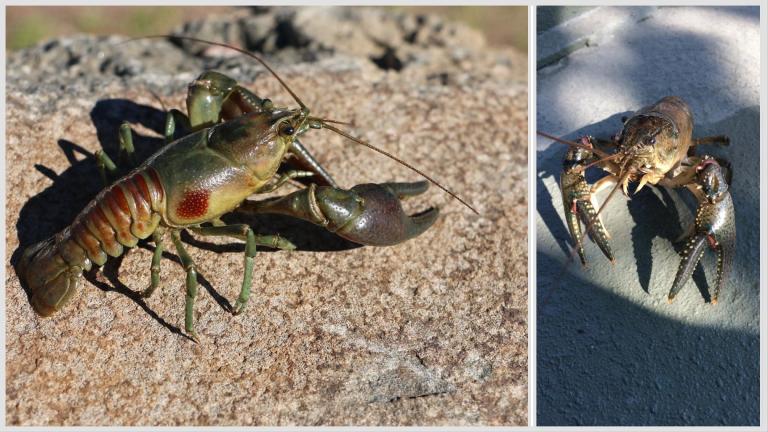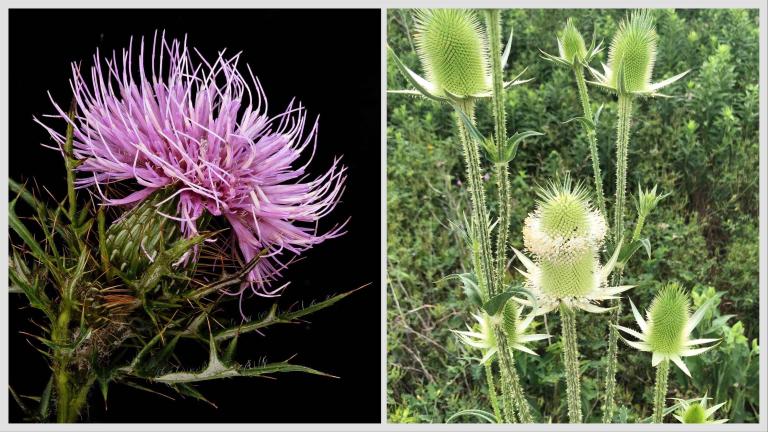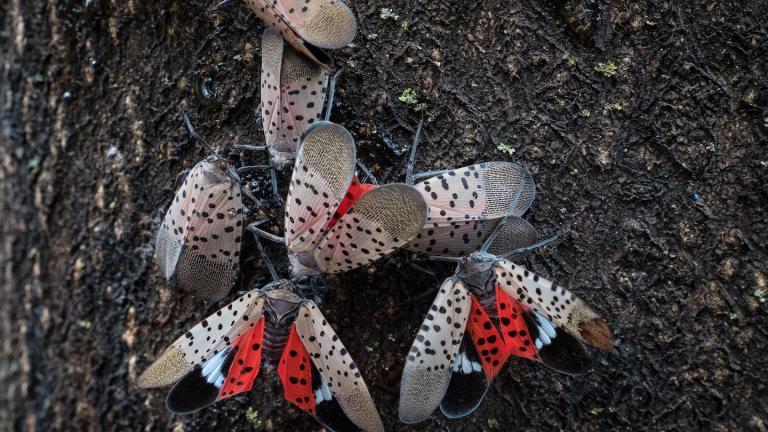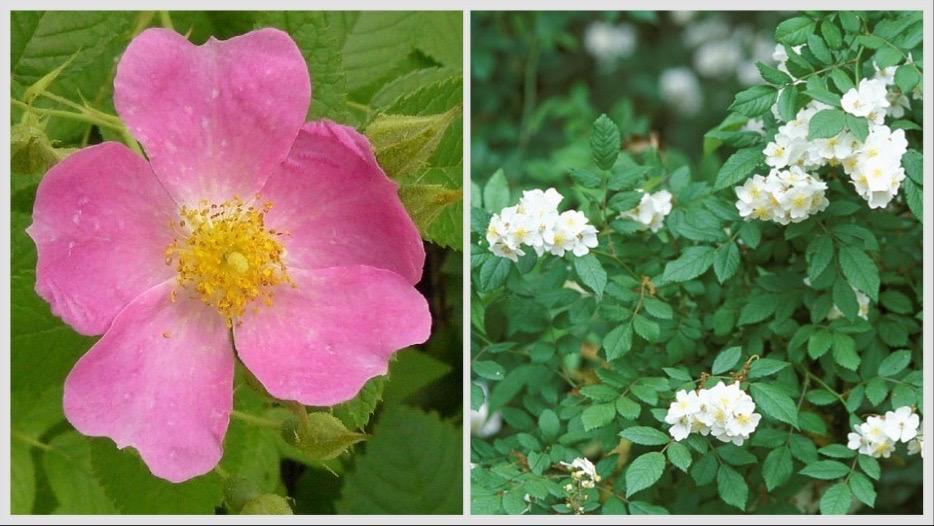
In honor of National Invasive Species Awareness Week, we’re posting daily “dupes” — invasives that can easily be confused with native species.
In Part One, we looked at native thistle versus invasive teasel. Part Two tackled crayfish.
Today brings us to a truly unexpected subject: the rose.
Yes, the rose. Even a flower almost universally prized for its beauty and elegance — a symbol of love, no less — can turn aggressive under the right circumstances. This may come as a shock to gardeners, amongst whom roses have a reputation as temperamental, disease-prone heartbreakers.
Enter the multiflora rose (Rosa multiflora).
Looks can be deceiving. Lovely blooms mask the aggressive invasive tendencies of multiflora rose, which forms dense, thorny thickets. (Credits, clockwise from top left: Leslie J. Mehrhoff, University of Connecticut, Bugwood.org; Leslie J. Mehrhoff, University of Connecticut, Bugwood.org; Chris Evans, University of Illinois, Bugwood.org; Rob Routledge, Sault College, Bugwood.org)
Native to Japan, Korea and eastern China, multiflora was imported to the U.S. in 1866 as rootstock. But it wasn’t long before growers discovered another use for this perennial shrub, with its clusters of delicate white flowers and large arching canes.
In the 1930s, the horticulture industry began promoting multiflora to homeowners as a “living” privacy fence. At the same time, according to the Illinois Department of Natural Resources, the U.S. Soil Conservation Service started pushing multiflora for erosion control and as natural hedges for livestock, with multiflora's vicious thorns essentially doing the job of barbed wire.
The rest of this story is ripped directly from the invasive species playbook: Non-native “escapes” from cultivation, behaves in ways not anticipated, spreads aggressively where it isn’t wanted, outcompetes natives and contributes to the planet’s ongoing loss of biodiversity.
(The Soil Conservation Service made a number of these “whoops, our bad” mistakes. The spread of autumn olive, another member of the least-wanted club, is also their handiwork.)
Whatever benefits multiflora once provided — quasi “naturally” corralling cattle, providing cover for species of prey, among others — have long since been outweighed by the plant's negatives. Namely that it creates dense, all but impenetrable thickets, degrades the soil, and crowds out natives wherever it becomes established.
And where it’s settled are roadsides, right-of-ways, woodland borders, fence rows, rail lines and abandoned pastures, to name a few. If those scraps of land sound like they're low-value to start with, they also happen to be the last refuges for many native plants, whose range has been lost to agriculture and development.
Indeed “woodland borders and clearings, acid gravel seeps, fence rows, abandoned pastures and waste areas” is what Illinois Wildflowers describes as the habitat for our own native climbing rose.
The native climbing rose is also known as Illinois rose, prairie rose, Michigan rose. Its deep pink petals grow paler as they mature, leading to multicolored blooms. (Credits: Greg Vaclavek, Native Plant Nursery, Bugwood.org (l); Peter Chen, College of DuPage, Bugwood.org)
The species Rosa setigera goes by a number of common names: prairie rose, Illinois rose, climbing wild rose and Michigan rose.
This shrub is a rare native climber, growing up to eight feet tall, and has arching canes similar to multiflora. But where the invader’s blooms are white, the flowers of the climbing wild rose — like those of almost all native roses — are pink. According to the Chicago Botanic Garden, as the petals mature, they become paler, changing from deep pink to light pink to pink-ish white, resulting in multi-colored blooms.
Home gardeners can lend climbing wild rose — and other natives — a hand by adding them to their landscaping. The rose can be purchased at native plant nurseries, and seed packets are even sold at big box stories.
Meanwhile multiflora rose is listed as an invasive plant in Illinois through the Illinois Exotic Weed Act, meaning it can’t be legally bought, sold, distributed or planted without a permit.
To report an invasive species sighting send an email to [email protected]. Provide the following details: Location (GPS coordinates, address, crossroads, town — the more info the better), date, your name and contact information, and attach photographs.
Contact Patty Wetli: @pattywetli | (773) 509-5623 | [email protected]

